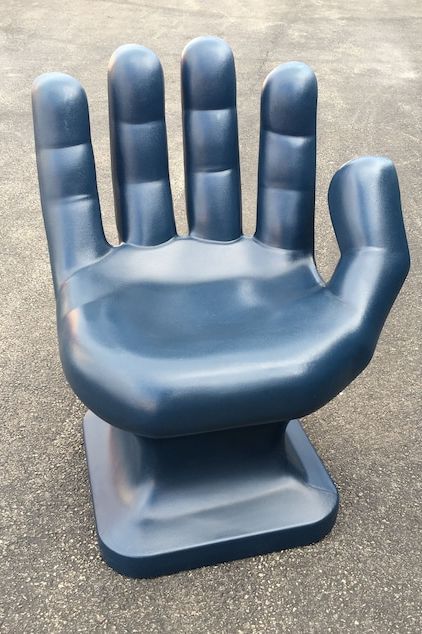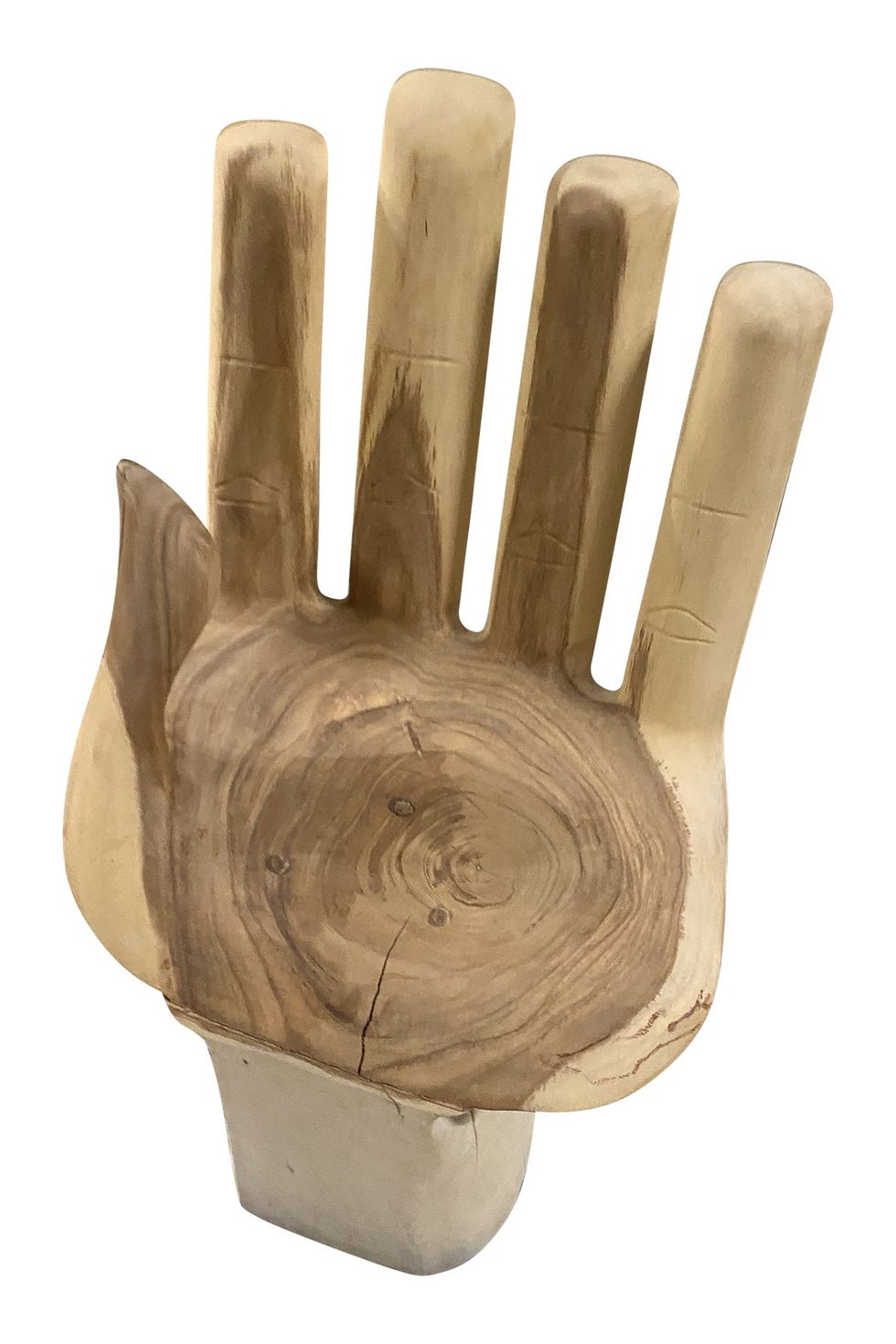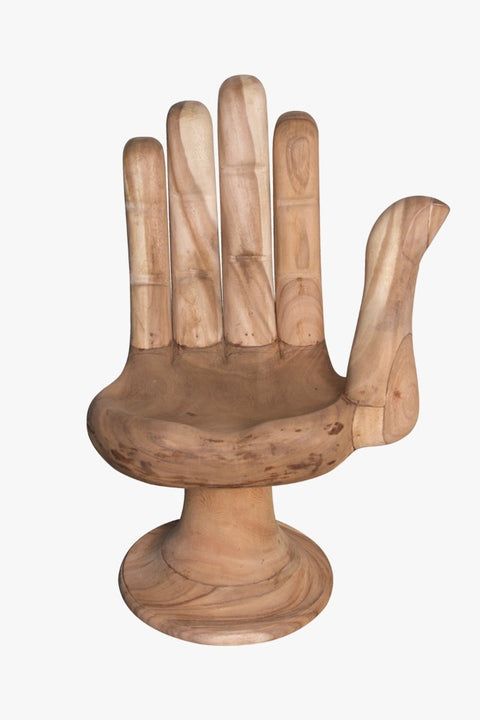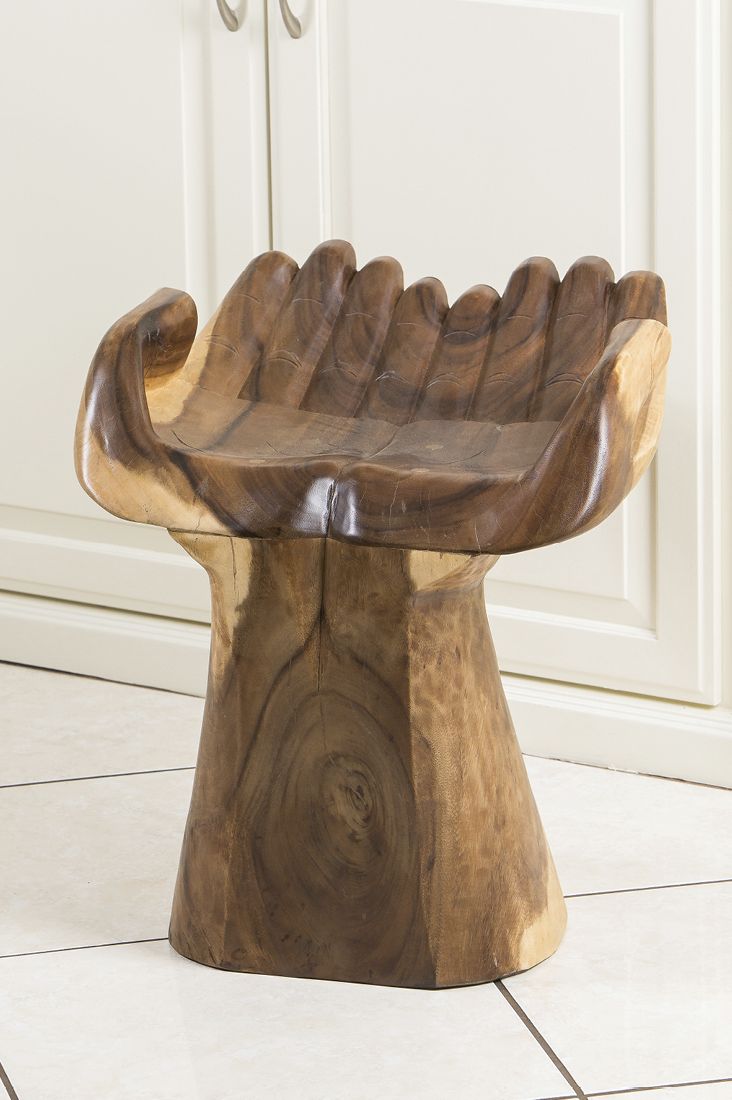Whether you've seen it on your Instagram feed or in real life at, say, a hip hotel, the hand chair always leaves a lasting impression and begs the question: what's the story behind the design? With the palm of the hand as the seat and the fingers pointing upwards to serve as the back, this quirky chair has remained popular since its creation in the early 1960s. “Like fashion, many home trends cycle through every 20 years or so,” says Noel Fahden, vice president of merchandising at Chairish. “What’s interesting is that this chair is always in demand. Contemporary designers have used it well in many different settings in surprising ways, such as with French antiques and tapestries. It’s really a piece of sculpture that works anywhere.”
Whether you find these chairs amazing (or slightly peculiar and thoroughly eye-catching!), keep reading to learn all about the history behind the hand chair below.
Who created the hand chair?
Though there were versions of hand chairs made in earlier cultures, the modern hand chair was designed in Mexico by surrealist artist Pedro Friedeberg, who was born in 1936 and fled to Mexico from Italy with his parents during World War II. The artist hired master carpenter Jose Gonzalez in the early '60s to carve the first chair from mahogany. Due to its mix of the fantastic and the practical, the hand chair became a cultural phenomenon. Friedeberg developed many variations, including using untreated wood, silver leaf, and black white, or red paint. Today, Friedeberg’s work is in the permanent collections of the Los Angeles County Museum of Art, the Museum of Contemporary Art in Chicago, the Smithsonian American Art Museum in Washington, D.C., and many more.
Why is the hand chair popular?
Because of its whimsical shape, the hand chair still manages to look fresh and unexpected to a whole new generation of homeowners, says Fahden. It’s equally at home in a formal living room as it is in a kid’s room. “What I find so enjoyable is that it works with any style. It’s essentially a big piece of sculpture, and sculpture is more popular than ever,” says Fahden. “It’s really an extension of this trend.”
Where can you buy a hand chair?
As you’d expect, many copies of the artist’s work have been made through the years, including hand chairs made from plastic, teak, and concrete. An original Friedeberg creation will set you back $20,000 to $30,000 these days if you can locate one; his signature is burned into the bottom so you’ll know it’s his work. But reproductions from the '70s, '80s, and '90s can be found for a few thousand, while less expensive modern copies are available for a few hundred dollars. Online auctions and vintage stores are great places to search for this piece.
Follow House Beautiful on Instagram.


















